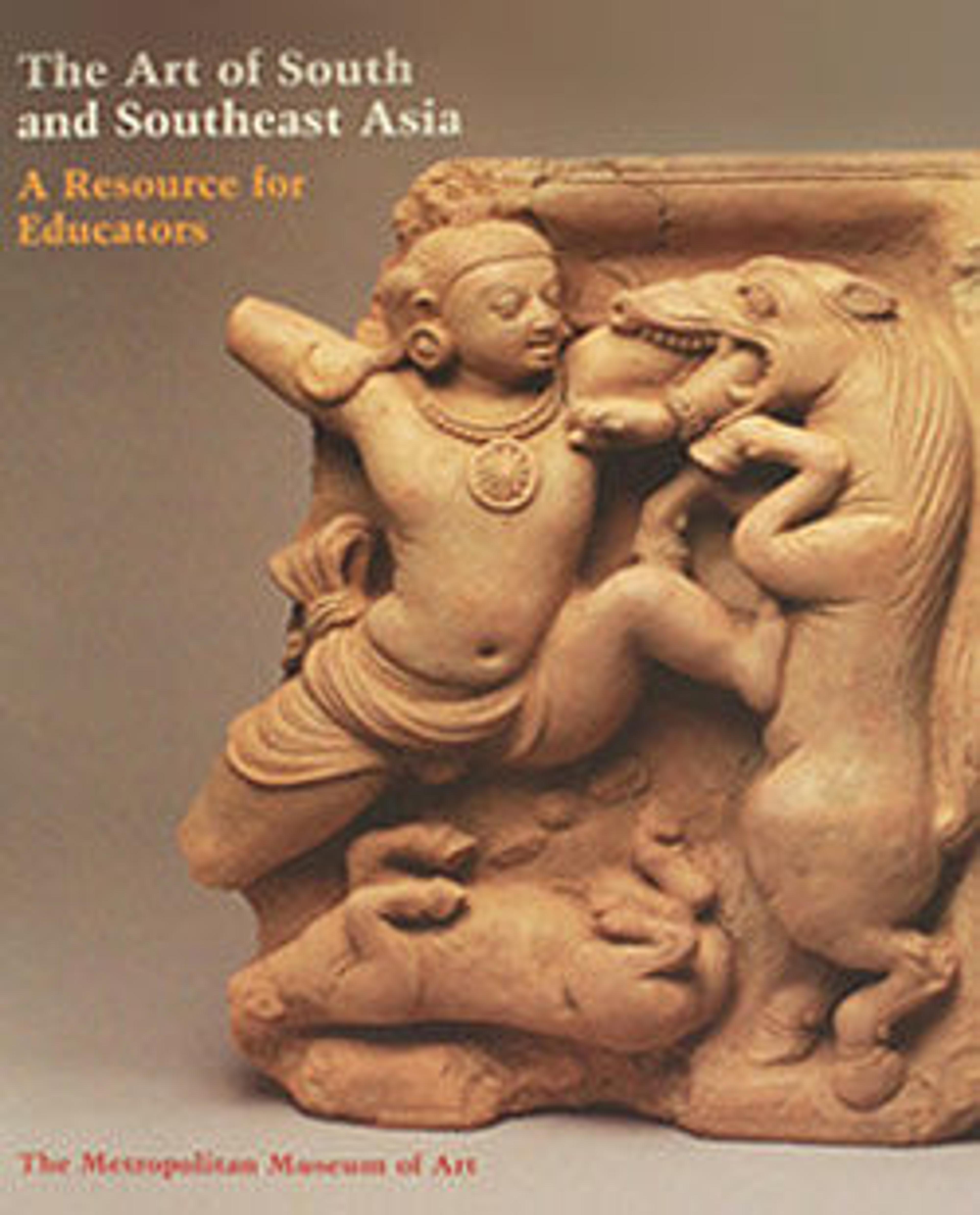Architectural Ensemble from a Jain Meeting Hall
The location of the Museum's structure in the original mandapa is uncertain; it probably rested on top of the flat roof and allowed sunlight into the building. In this installation, one of the four sides, which has had a great many plaster restorations, has been left off so that the ensemble can be easily viewed. The original metal grillwork that kept bats and birds from the interior of the mandapa has not survived; it has been replaced with wider wooden grating.
This particularly fine and elaborate early Gujarati wood carving is the type that was translated into stone by craftsmen of the great Mughal emperor Akbar in the sixteenth century on some buildings at Fatehpur-Sikri (City of Victory) and at the harem at the Red Fort in Agra.
Artwork Details
- Title:Architectural Ensemble from a Jain Meeting Hall
- Date:last quarter of 16th century
- Culture:India (Gujarat, Patan)
- Medium:Teak with traces of color
- Dimensions:H. (approx.) 15 ft. (4.58 cm)
- Classification:Sculpture
- Credit Line:Gift of Robert W. and Lockwood de Forest, 1916
- Object Number:16.133.1
- Curatorial Department: Asian Art
Audio
7980. Architectural Ensemble from a Jain Meeting Hall
Gallery 243
Look up at the ornate sculpted teakwood dome, with its balconies and architectural supports. Traces of pigment suggest that originally, these reliefs were brightly painted. Notice the ring of large figures inside the dome. These are rulers of the eight cosmic directions, flanked by female attendants. They signify that this dome is a map of the celestial realm. Elephants, musicians, and semi-divine beings crowd the other concentric circles, along with other animal and floral forms. The pendant at the center of the dome terminates in a lotus blossom.
This dome sheltered the meeting hall of a late-sixteenth-century Jain temple, in the West Indian province of Gujarat. Jainism remains an active faith in India, attracting followers worldwide. It shares many features with Buddhism. Like the historical Buddha, the traditional founder of Jainism, Mahavira, was an Indian prince born in the sixth century BC. Mahavira and Buddha both left their father’s kingdoms to pursue lives of ascetic spirituality. Central to Jain beliefs is the doctrine of ahimsa, or extreme nonviolence toward all living things. The most devout Jains sweep the path before them as they walked, to avoid killing even an insect.
More Artwork
Research Resources
The Met provides unparalleled resources for research and welcomes an international community of students and scholars. The Met's Open Access API is where creators and researchers can connect to the The Met collection. Open Access data and public domain images are available for unrestricted commercial and noncommercial use without permission or fee.
To request images under copyright and other restrictions, please use this Image Request form.
Feedback
We continue to research and examine historical and cultural context for objects in The Met collection. If you have comments or questions about this object record, please contact us using the form below. The Museum looks forward to receiving your comments.
